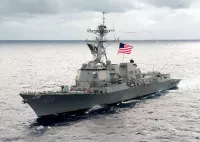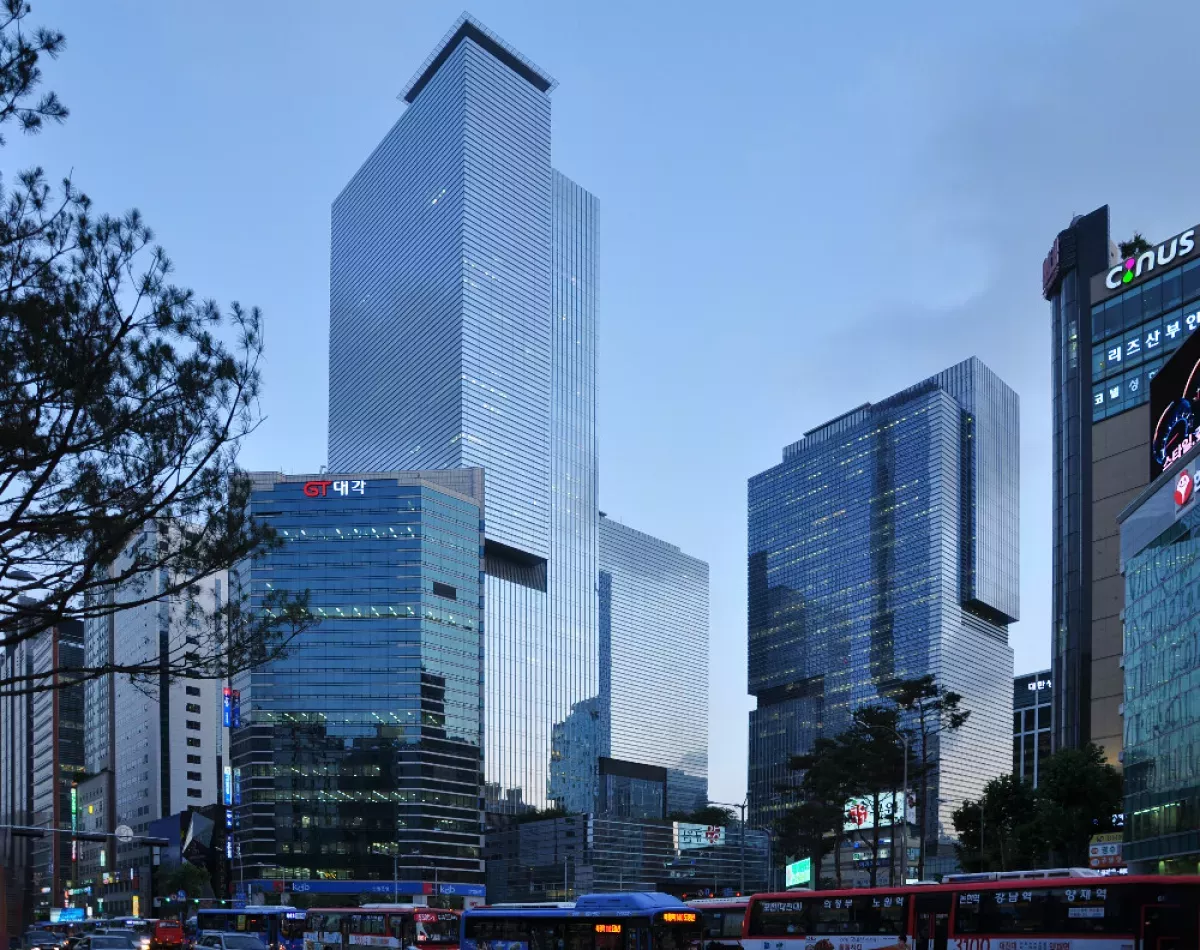Samsung Group is a South Korean multinational manufacturing conglomerate and the largest chaebol in South Korea. Headquartered in Seoul, the group encompasses numerous affiliated businesses operating under the Samsung brand. As of 2024, Samsung holds the world's fifth-highest brand value, reflecting its significant global presence and market influence.
1912: Sharp Corporation Founded
In 1912, Sharp Corporation was founded. Samsung owns 3% of Sharp Corporation, a rival company to Samsung.
1938: Founding of Mitsuboshi Trading Company
In 1938, Lee Byung-chul founded Mitsuboshi Trading Company (Samsung Sanghoe) in Taikyu, dealing in dried fish, groceries, and noodles.
1938: Samsung's Founding
In 1938, Lee Byung-chul founded Samsung as a trading company.
1947: Joint Investment in Samsung Mulsan Gongsa
In 1947, Cho Hong-jai, founder of the Hyosung group, jointly invested with Lee Byung-chul in Samsung Mulsan Gongsa, which later became Samsung C&T Corporation.
1947: Head Office Relocation to Seoul
In 1947, Lee Byung-chul moved the head office of Samsung to Seoul.
1954: Foundation of Cheil Mojik
In 1954, Lee founded Cheil Mojik, a textiles company, and built the first plant in Chimsan-dong, Taegu.
March 1957: Founded as Dongbang Life Insurance
In March 1957, Samsung Life Insurance was founded as Dongbang Life Insurance.
July 1963: Affiliated with the Samsung Group
In July 1963, Dongbang Life Insurance became an affiliate of the Samsung Group.
1964: Establishment of Tongyang Broadcasting Company
In 1964, Byung-chul owned the Tongyang Broadcasting Company, a private radio and television company.
January 1969: Samsung Engineering founded
In January 1969, Samsung Engineering, a multinational construction company, was founded in Seoul.
1973: Samsung Electro-Mechanics established
In 1973, Samsung Electro-Mechanics was established as a manufacturer of key electronic components.
1973: Samsung Corning Precision Glass Joint Venture
In 1973, Samsung and Corning established Samsung Corning Precision Glass as a joint venture to manufacture cathode ray tube glass for black and white televisions.
August 1974: Samsung Heavy Industries founded
In August 1974, Samsung Heavy Industries, a shipbuilding and engineering company, was founded in Seoul.
1978: Samsung Thomson-CSF Co., Ltd. established
In 1978, Samsung Thomson-CSF Co., Ltd. (later known as Samsung Thales Co., Ltd.) was established as a joint venture between Samsung-Techwin and Thales.
1979: Seagate Technology Founded
In 1979, Seagate Technology was founded. Samsung Electronics currently owns 9.6% of Seagate Technology, making it the second-largest shareholder.
1980: Acquisition of Hanguk Jeonja Tongsin
In 1980, Samsung acquired Hanguk Jeonja Tongsin and entered the telecommunications hardware industry, initially producing switchboards.
1980: Closure of Tongyang Broadcasting Company
In 1980, Tongyang Broadcasting Company was shut down after the Korean government reviewed the number of media outlets allowed.
1982: Establishment of TV Assembly Plant in Portugal
In 1982, Samsung Electronics built a television assembly plant in Portugal.
1984: Establishment of Plant in New York
In 1984, Samsung Electronics established a plant in New York.
March 1985: Samsung SDS founded
In March 1985, Samsung SDS, a multinational IT service company, was founded.
1987: Lee Byung-chul's Death and Samsung's Division
After Lee Byung-chul died in 1987, Samsung was divided into five business groups: Samsung Group, Shinsegae Group, CJ Group, Hansol Group, and JoongAng Group.
1987: Division of Samsung Group after Founder's Death
After the death of the founder Lee in 1987, Samsung Group was separated into five business groups: Samsung Group, Shinsegae Group, CJ Group, Hansol Group and the JoongAng Group.
1987: Establishment of Facility in England
In 1987, Samsung Electronics established a facility in England.
1987: Samsung Advanced Institute of Technology (SAIT) established
In 1987, the Samsung Advanced Institute of Technology (SAIT) was established.
1987: USITC Ruling on Computer Chip Sales
In 1987, the United States International Trade Commission found that the Samsung Group unlawfully sold computer chips in the United States without licenses from the chip inventor, Texas Instruments Inc.
1987: Lee Byung-chul's life
Lee Byung-chul who founded Mitsuboshi Trading company in 1938, lived from 1910 to 1987.
1989: Samsung BP Chemicals Joint Venture
In 1989, Samsung and BP established Samsung BP Chemicals as a joint venture to produce high-value-added chemical products.
1989: Sungjin Geotec Founded
In 1989, Sungjin Geotec was founded. Samsung Engineering holds a 10% stake in Sungjin Geotec, an offshore oil drilling company that is a subsidiary of POSCO.
1990: MEMC Joint Venture with Samsung Electronics
In 1990, MEMC entered into a joint venture agreement with Samsung Electronics to construct a silicon plant in Korea.
1990: Samsung Stake in Rambus Incorporated
In 1990, Rambus Incorporated was founded. Currently, Samsung Electronics owns 4.19% of Rambus Incorporated.
1990: Globalization of Activities
Since 1990, Samsung increasingly globalised its activities and electronics, with mobile phones and semiconductors becoming key income sources.
1991: Separation of Hansol Group
In 1991, Hansol separated from the Samsung Group, severing all payment guarantees and share-holding ties with Samsung affiliates.
1991: Samsung Buys Stake in Pantech
In 1991, Samsung Electronics bought a 10% stake in rival phone maker Pantech.
1992: World's Largest Producer of Memory Chips
In 1992, Samsung became the world's largest producer of memory chips.
1993: Separation of CJ CheilJedang from Samsung Group
In 1993, CJ CheilJedang separated from Samsung Group.
1993: Restructuring of Samsung Group
In 1993, Lee Kun-hee sold off ten of Samsung Group's subsidiaries, downsized the company, and merged other operations to concentrate on electronics, engineering, and chemicals.
November 1994: Samsung Medical Center founded
On November 9, 1994, the Samsung Medical Center was founded.
1994: Renault Samsung Motors Founded
In 1994, Renault Samsung Motors was founded. Samsung Card currently owns 19.9% of the automobile manufacturer Renault Korea Motors.
March 1995: Rollei Watches Advertising Prohibited
On March 11, 1995, the Cologne District Court prohibited the advertising and sale of Rollei watches in Germany. This was after Samsung Techwin acquired the German camera manufacturer Rollei. Rollei's expertise in optics was to develop a line of Swiss-made watches.
1995: Stemco Joint Venture Established
In 1995, Samsung Electro-Mechanics and Toray Industries established Stemco as a joint venture.
1995: Samsung Buys Stake in AST Research
In 1995, Samsung bought a 40% stake in AST Research to enter the North American computer market. However, Samsung was forced to close the company later.
1995: Creation of First LCD Screen
In 1995, Samsung created its first liquid-crystal display screen.
1995: Samsung Invests in FUBU
In 1995, Samsung's textile department invested in FUBU, an American hip hop apparel company.
1995: Establishment of Steco
In 1995, Steco, a joint venture between Samsung Electronics and Japan's Toray Industries, was established.
1996: First LCD Glass Substrate Facility Opens
In 1996, Samsung Corning Precision Glass opened its first LCD glass substrate manufacturing facility in Gumi, South Korea.
1996: Establishment of Facility in Austin, Texas
In 1996, Samsung Electronics established a facility in Austin, Texas.
1996: Reacquisition of Sungkyunkwan University Foundation
In 1996, the Samsung Group reacquired the Sungkyunkwan University foundation.
1997: Asian Financial Crisis and Samsung Motor Sale
During the 1997 Asian financial crisis, Samsung Motor was sold to Renault at a significant loss.
July 1998: Samsung Part of DRAM Price Cartel
From 1 July 1998 to 15 June 2002, Samsung companies were part of a price cartel of ten companies for DRAMs.
1998: Alpha Processor Inc. (API) established
In 1998, Alpha Processor Inc. (API) was established as a joint venture with Compaq to enter the high-end microprocessor market and expand Samsung's non-memory chip business.
1998: GE Samsung Lighting established
In 1998, GE Samsung Lighting was established as a joint venture between Samsung and GE Lighting.
1998: Nokia's Market Leadership
In 1998, Nokia had been the market leader for mobile phone sales.
1998: Car related transactions
In 1998, Renault Samsung Motors started making car related transactions and since have expanded into a range of cars and electric car models.
April 1999: Start of DRAM Price Fix Conspiracy
In Canada, during April 1999, some DRAM microchip manufacturers conspired to price fix, among the accused included Samsung. Purchasers of computers, printers, MP3 players, gaming consoles, or cameras between April 1999 and June 2002 were affected.

1999: Brooks Automation Asia Co., Ltd. Joint Venture
In 1999, Brooks Automation and Samsung established Brooks Automation Asia Co., Ltd. as a joint venture.
1999: Formation of Korea Aerospace Industries (KAI)
In 1999, Korea Aerospace Industries (KAI) was founded as a merger between the aerospace divisions of Samsung Aerospace, Daewoo Heavy Industries, and Hyundai Space and Aircraft Company.
1999: Rollei Management Buys Out Company
In 1999, Rollei management bought out the company from Samsung Techwin.
1999: Samtron Becomes Independent
In 1999, Samtron, previously a subsidiary of Samsung, became an independent company.
2000: Opening of R&D Center in Warsaw
In 2000, Samsung R&D opened a development center in Warsaw, Poland, focusing on set-top-box technology before moving into digital TV and smartphones.
2000: Global Steel Exchange Joint Venture
In 2000, Samsung formed a joint venture called Global Steel Exchange with Cargill, Duferco Group, and Tradearbed to manage their online steel transactions.
2001: Renamed Samsung Thales Co., Ltd
In 2001, Samsung Thomson-CSF Co., Ltd. was renamed Samsung Thales Co., Ltd.
June 2002: End of DRAM Price Cartel
From 1 July 1998 to 15 June 2002, Samsung companies were part of a price cartel of ten companies for DRAMs.
2003: Samtron Becomes Samsung
In 2003, Samtron became Samsung, with the Samtron website redirecting to Samsung's.
April 2004: S-LCD Corporation Joint Venture
In April 2004, Samsung Electronics and Sony Corporation established S-LCD Corporation as a joint venture.
October 2004: SD Flex Co., Ltd. Founded
In October 2004, Samsung and DuPont established SD Flex Co., Ltd. as a joint venture corporation.
2004: S-LCD Venture with Sony
In 2004, Samsung started a liquid-crystal display (LCD) venture with Sony.
2004: Formation of TSST
In 2004, Toshiba Samsung Storage Technology Corporation (TSST) was formed as a joint venture between Samsung Electronics and Toshiba of Japan, specializing in optical disc drive manufacturing. Toshiba owns 51% of the stock, while Samsung owns the remaining 49%.
July 2005: Establishment of Samsung Air China Life Insurance
In July 2005, Samsung Air China Life Insurance, a 50:50 joint venture between Samsung Life Insurance and China National Aviation Holding, was established in Beijing.
2006: Establishment of S-LCD Joint Venture
In 2006, S-LCD was established as a joint venture between Samsung and Sony to provide a stable supply of LCD panels for both manufacturers.
October 2007: Discovery of Lee Kun-hee's Slush Fund
On 29 October 2007, Kim Yong-chul and the Catholic Priests Association for Justice uncovered Lee Kun-hee's slush fund. Kim presented a list of 30 artworks purchased with the slush funds, to be found in Samsung's warehouse, along with documents about bribes.
2007: POSS – SLPC s.r.o. Founded
In 2007, POSS – SLPC s.r.o. was founded as a subsidiary of Samsung C & T Corporation, Samsung C & T Deutschland and POSCO.
2007: Bribery Allegations by Former Chief Lawyer
In 2007, former Samsung chief lawyer Kim Yong Chul claimed involvement in bribing and fabricating evidence on behalf of chairman Lee Kun-hee and the company, including raising secret funds through bank accounts.
March 2008: Samsung Begins Construction of Mobile Phone Plant in Vietnam
In March 2008, Samsung received an investment certificate and commenced the construction of its first mobile phone manufacturing plant, Samsung Electronics Vietnam (SEV), in Bac Ninh, Vietnam, initially with a 670 million USD investment. The investment was then increased to 1.5 billion USD and later to 2.5 billion USD.
June 2008: SB LiMotive Founded
In June 2008, Robert Bosch GmbH and Samsung SDI founded SB LiMotive as a joint company.
June 2008: Siltronic Samsung Wafer Pte. Ltd. Officially Opened
In June 2008, Siltronic Samsung Wafer Pte. Ltd., a joint venture between Samsung and Siltronic, was officially opened in Singapore.
October 2008: Largest Fall Since 2008
In the first trading after the August 2012 ruling, Samsung shares on the KOSPI fell 7.7%, the largest fall since 24 October 2008.
2008: Launch of Samsung Solstice Line
In 2008, Samsung officially launched the Samsung Solstice line of devices, which was later developed into the Samsung Galaxy line of devices.
December 2009: Lee Kun-hee Pardoned by South Korean President
On 29 December 2009, South Korean president Lee Myung-bak issued a special pardon for Lee Kun-hee, stating that the purpose was to allow Lee to remain on the International Olympic Committee.
2009: GE Samsung Lighting broken up
In 2009, the joint venture GE Samsung Lighting between Samsung and GE Lighting was broken up.
2009: Consolidated revenues
In FY 2009, Samsung reported consolidated revenues of 220 trillion KRW ($172.5 billion).
December 2010: Samsung Buys MEDISON Co.
In December 2010, Samsung Electronics bought MEDISON Co., a South Korean medical-equipment company, marking Samsung's diversification beyond consumer electronics.
2010: Renault Samsung Ownership
As of 2010, Renault Samsung is 80.1 per cent owned by Renault and 19.9 per cent owned by Samsung.
2010: Samsung Heavy Industries as Second-Largest Shipbuilder
By 2010, Samsung Heavy Industries was the world's second-largest shipbuilder by revenues.
2010: Kim Yong-chul Publishes Thinking about Samsung
In 2010, Kim Yong-chul published the book "Thinking about Samsung", in which he details Samsung's behavior and lobbying of governmental authorities to transfer Samsung's management rights to Lee Jae-yong.
2010: Ten-Year Growth Strategy Announcement
In 2010, Samsung announced a ten-year growth strategy centered around five businesses, including biopharmaceuticals, committing ₩2.1 trillion.
2010: Collaboration with Pfizer
In 2010, the Samsung Medical Center and Pfizer agreed to collaborate on research to identify the genomic mechanisms responsible for clinical outcomes in hepatocellular carcinoma.
2010: Consolidated revenues and profits
In FY 2010, Samsung reported consolidated revenues of 280 trillion KRW ($258 billion) and profits of 30 trillion KRW ($27.6 billion).
March 2011: Samsung Fire & Marine Insurance operations
As of March 2011, Samsung Fire & Marine Insurance had operations in 10 countries and served 6.5 million customers.
April 2011: Samsung Group's company structure
As of April 2011, the Samsung Group consisted of 59 unlisted companies and 19 listed companies, all primarily listed on the Korea Exchange.
July 2011: Samsung Acquires Grandis Inc.
In July 2011, Samsung announced that it had acquired spin-transfer torque random access memory (MRAM) vendor Grandis Inc., focusing on the development of next-generation random-access memory in their R&D operations.
August 2011: KRW-USD exchange rate
As of August 19, 2011, the KRW-USD exchange rate was 1,084.5 KRW per USD.
October 2011: Samsung Fined for DRAM Price Cartel
On 19 October 2011, Samsung companies were fined €145,727,000 for participating in a price cartel of ten companies for DRAMs. The cartel operated from 1 July 1998 to 15 June 2002.
December 2011: Filming of Lee Kun-hee Allegedly Paying for Sex Acts
Between December 2011 and June 2013, footage was filmed on five occasions appearing to show Samsung chairman Lee Kun-hee paying a group of prostitutes for sex acts.
December 2011: Samsung to Buy Sony's Stake in LCD Venture
In December 2011, the board of Samsung Electronics approved a plan to buy Sony's entire stake in their 2004 joint liquid-crystal display (LCD) venture for 1.1 trillion won ($939 million).
December 2011: Samsung Acquires Sony's Shares in S-LCD
On December 26, 2011, Samsung Electronics announced its acquisition of all of Sony's shares in the S-LCD venture.
December 2011: Samsung Life Insurance operations
As of December 2011, Samsung Life Insurance had operations in seven countries, serving 8.08 million customers and employing 5,975 people.
December 2011: Acquisition of Sony's Stake in S-LCD
On 26 December 2011, Samsung acquired Sony's stake in the S-LCD joint venture.
2011: World's second-largest semiconductor maker
By 2011 revenues, Samsung Electronics was the world's second-largest semiconductor maker, after Intel.
2011: Samsung and MEMC Form Joint Venture
In 2011, MEMC Electronic Materials Inc. and an affiliate of Samsung formed a joint venture to build a polysilicon plant.
2011: Samsung Biologics founded
In 2011, Samsung Biologics, a biopharmaceutical division of Samsung, was founded.
2011: Achieved total revenues
In 2011, Samsung Engineering achieved total revenues of 9,298.2 billion won (US$8.06 billion).
May 2012: Samsung Acquires mSpot
In May 2012, mSpot announced that it had been acquired by Samsung Electronics to create a cloud-based music service, leading to the creation of Samsung Music Hub.
August 2012: Jury Verdict in Apple Patent Case
On 24 August 2012, an American jury ruled that Samsung Electronics had to pay Apple $1.05 billion in damages for violating six of its patents on smartphone technology. Apple then sought to ban the sales of eight Samsung phones in the United States, but this was denied by the court.
December 2012: Samsung Acquires NVELO, Inc.
In December 2012, Samsung acquired the privately held storage software vendor NVELO, Inc., focusing on software for managing and optimizing next-generation Samsung SSD storage subsystems.
December 2012: EU antitrust regulator fined Samsung SDI
On December 5, 2012, the European Union's antitrust regulator fined Samsung SDI and several other major companies for fixing prices of TV cathode-ray tubes in two cartels that lasted nearly a decade.
December 2012: Publication of "In South Korea, the Republic of Samsung"
On December 9, 2012, The Washington Post published an article titled "In South Korea, the Republic of Samsung," which included criticisms of Samsung's influence and practices, including allegations of stifling smaller businesses and colluding to fix prices.
2012: Investment in Austin Facility
As of 2012, Samsung has invested more than US$13 billion in the Austin facility, making it the largest foreign investment in Texas.
2012: Cheil Worldwide's Ranking
By 2012, Cheil Worldwide was ranked as the world's 15th-largest advertising agency by revenues.
2012: Complaints About Child Labor in Samsung's Supply Chain
From 2012 to 2015, Samsung faced several complaints regarding the use of child labor within its supply chain.
2012: Achieved total revenues
In 2012, Samsung SDS achieved total revenues of 6,105.9 billion won (US$5.71 billion).
2012: Samsung Becomes World's Biggest Advertiser
In 2012, Samsung became the world's biggest advertiser, spending $4.3 billion, compared to Apple's $1 billion.
2012: Samsung Electronics Becomes Largest Mobile Phone Maker
In the first quarter of 2012, Samsung Electronics became the world's largest mobile phone maker by unit sales, overtaking Nokia.
2012: World's largest mobile phone maker
In the first quarter of 2012, Samsung Electronics was the world's largest mobile phone maker by unit sales, holding a global market share of 25.4%.
January 2013: Samsung Acquires NeuroLogica
In January 2013, Samsung acquired the medical imaging company NeuroLogica to build a leading medical technology business.
June 2013: Filming of Lee Kun-hee Allegedly Paying for Sex Acts
Between December 2011 and June 2013, footage was filmed on five occasions appearing to show Samsung chairman Lee Kun-hee paying a group of prostitutes for sex acts.
2013: Advertising and Marketing Spend
In 2013, Samsung Electronics spent an estimated $14 billion (U.S.) on advertising and marketing, representing 5.4% of annual revenue.
2013: Investigation by Fair Trade Commission of Taiwan
In 2013, the Fair Trade Commission of Taiwan investigated Samsung and its local advertising agency for false advertising related to online forum attacks on competitors.
July 2014: Samsung Cuts Contract with Shinyang Electronics over Child Labor
In July 2014, Samsung terminated its contract with Shinyang Electronics following a complaint and subsequent investigation that revealed the company was violating child labor laws by employing underage workers. Samsung cited its "zero tolerance" policy for child labor violations as the reason for severing ties.
July 2014: Criticism of HEG for Using Underage Workers
In July 2014, one of Samsung's Chinese supplier factories, HEG, faced criticism from China Labor Watch (CLW) for allegedly using underage workers. HEG denied these charges and initiated legal action against China Labor Watch.
August 2014: CLW Claims HEG Employed Underage Workers
In August 2014, CLW issued a statement claiming that HEG employed over ten children under the age of 16 at a factory in Huizhou, Guangdong. The group identified the youngest child as 14 years old. Samsung conducted an onsite investigation but found no evidence of child labor; CLW responded that HEG had dismissed the workers before the investigation.
August 2014: Samsung Acquires SmartThings and Quietside LLC
In August 2014, Samsung acquired SmartThings, a home automation startup, and US air conditioner distributor Quietside LLC to strengthen its "smart home" business.
November 2014: Samsung Acquires Proximal Data
In November 2014, Samsung acquired Proximal Data, a San Diego-based pioneer of server-side caching software.
December 2014: Sale to Hanwha Group announced
In December 2014, it was announced that Hanhwa Techwin would be sold to Hanwha Group.
2014: Agreement between Biogen Idec and Samsung Bioepis
In 2014, Biogen Idec agreed to commercialize future anti-TNF biosimilar products in Europe through Samsung Bioepis.
2014: Lee Kun-hee Suffers Heart Attack
In 2014, Lee Kun-hee suffered a heart attack and lapsed into a coma.
2014: Samsung Sharp Sans Font Unveiled
In 2014, Samsung unveiled its Samsung Sharp Sans font.
2014: Reopening of DRAM Price Fix Case in Canada
In 2014, the Canadian government reopened the case involving Samsung and other manufacturers regarding a DRAM price fix conspiracy. The companies agreed upon a $120 million agreement.
2014: Expansion of Vietnamese Suppliers in Samsung's Global Supply Chain
In 2014, the number of Vietnamese first- and second-tier suppliers in Samsung's global supply chain started to increase.
February 2015: Samsung Acquires LoopPay
In February 2015, Samsung acquired U.S.-based mobile payments firm LoopPay, allowing Samsung to enter the smartphone transaction market.
March 2015: Samsung Acquires YESCO Electronics
In March 2015, Samsung acquired YESCO Electronics, a U.S.-based manufacturer of LED displays, specializing in digital billboards and message signs.
June 2015: Take-over completed
In June 2015, the take-over of Hanhwa Techwin by Hanwha Group was completed.
August 2015: SDI began using the "21700" cell format
In August 2015, Samsung SDI began using the "21700" cell format.
2015: Complaints About Child Labor in Samsung's Supply Chain
From 2012 to 2015, Samsung faced several complaints regarding the use of child labor within its supply chain.
2015: Audio Logo Discontinued
In 2015, Samsung discontinued its audio logo, which consisted of the notes E♭, A♭, D♭, E♭, produced by Musikvergnuegen and written by Walter Werzowa.
2015: Most U.S. Patents Granted
In 2015, Samsung received 7,679 utility patents through 11 December, granting them more U.S. patents than any other company.
July 2016: Release of Video Allegedly Showing Lee Kun-hee Paying for Sex Acts
In July 2016, KCIJ-Newstapa released a video appearing to show Samsung chairman Lee Kun-hee paying a group of prostitutes for sex acts.
July 2016: SamsungOne Font Unveiled
In July 2016, Samsung unveiled its SamsungOne font, designed for consistent visual identity across Samsung products, focusing on legibility for various devices and marketing materials.
August 2016: Galaxy Note 7 Sales Launch
On 19 August 2016, the Galaxy Note 7 smartphone went on sale.
September 2016: Suspension of Galaxy Note 7 Sales and Recall
In early September 2016, Samsung suspended sales of the Galaxy Note 7 and announced an informal recall due to battery defects causing fires and explosions.
October 2016: Samsung Acquires Viv
In October 2016, Samsung acquired Viv, a company working on artificial intelligence, created by the developers of Apple's Siri.
October 2016: Worldwide Recall and Production Halt of Galaxy Note 7
On 10 October 2016, Samsung recalled all Galaxy Note 7 smartphones worldwide and permanently ceased production of the phone the following day due to continued battery defects.
November 2016: Samsung Canada Acquires Rich Communication Services
In November 2016, Samsung Canada announced it had acquired Rich Communication Services, a company working on new technology for text messaging.
2016: Advertisement of Water Resistance Feature
During 2016–2018 Samsung advertised its Galaxy S7, S7 Edge, A5, A7, S8, S8 Plus and Note 8 devices as able to survive short immersion in water.
2016: Sale of chemical division to Lotte Corporation
In 2016, another chemical division of Samsung was sold to Lotte Corporation.
2016: Allegations of Blue House Receiving Funds from Chaebols
In 2016, the investigative team of special prosecutors announced that the Blue House received money from South Korea's four largest chaebols (Samsung, Hyundai Motor Group, SK Group and LG Group) to fund pro-government demonstrations.
February 2017: Arrest of Lee Jae-yong
In February 2017, Lee Jae-yong, de facto leader of Samsung, was arrested for bribery, embezzlement, hiding assets overseas and perjury.
2017: Samsung Electronics as Largest IT Company
By 2017, Samsung Electronics was the world's largest information technology company, consumer electronics maker, and chipmaker by revenues.
April 2018: Sentencing of Former CJ CheilJedang Employee
On 12 April 2018, the Supreme Court of Korea sentenced a former employee of CJ CheilJedang to four years and six months in prison for blackmail and intimidation.
2018: Advertisement of Water Resistance Feature
During 2016–2018 Samsung advertised its Galaxy S7, S7 Edge, A5, A7, S8, S8 Plus and Note 8 devices as able to survive short immersion in water.
2018: Samsung's Export Revenue Contribution to Vietnam
From 2018 to 2022, Samsung contributed over 306 billion USD in export revenue to Vietnam.
2018: Inauguration of mobile manufacturing facility in Noida, India
In 2018, Samsung inaugurated the world's largest mobile manufacturing facility in Noida, India, with Indian Prime Minister Narendra Modi and South Korean President Moon Jae-in in attendance. This marked a significant expansion of Samsung's manufacturing capabilities.
May 2020: Lee Jae-yong Apologizes for Union-Busting Scandals
On 6 May 2020, Samsung vice chairman Lee Jae-yong issued an apology regarding the company's union-busting scandals.
2020: Death of Lee Kun-hee
In 2020, Lee Kun-hee passed away after remaining in a coma since suffering a heart attack in 2014.
2020: Samsung Accused of Connection to Forced Uyghur Labor
In 2020, the Australian Strategic Policy Institute accused Samsung, along with at least 82 major brands, of having connections to alleged forced Uyghur labor in Xinjiang.
August 2021: Lee Jae-yong Released Early from Prison
In August 2021, Lee Jae-yong was released early from prison after serving 10 months of his sentence, as part of South Korea's yearly tradition of clemency on Liberation Day.
August 2022: Lee Jae-yong Receives Presidential Pardon
In August 2022, Lee Jae-yong received a presidential pardon, which was supported by 70% of the Korean public.
2022: Increase in Vietnamese Businesses in Samsung's Supply Chain
By the end of 2022, the number of Vietnamese first- and second-tier suppliers in Samsung's global supply chain has increased tenfold since 2014, reaching 257 businesses.
2022: Samsung Fined for Misleading Water Resistance Claims in Australia
In 2022, Australia's competition and consumer commission fined Samsung AU$14 million for making misleading water resistance claims about over 3.1 million smartphones.
2022: Top PCT patent applicant
In 2022, Samsung was among the top two applicants for PCT filled patents worldwide.
2022: Samsung's Contribution to Vietnam's Export Value
In 2022, Samsung's export revenue reached 65 billion USD, significantly contributing to Vietnam's total export value exceeding 732 billion USD.
2022: Samsung's revenue
In 2022, Samsung's revenue equaled 22.4% of South Korea's $1.67 trillion GDP, highlighting its significant impact on the national economy.
2023: Reduction of memory chip production
In 2023, Samsung announced its decision to reduce the production of memory chips due to a projected 96% decline in quarterly operating profit, attributed to weak demand after COVID and a slowing global economy. Despite this decision, the company's shares increased by more than 4%.
2023: Number of industrial design applications
In 2023, Samsung submitted 544 industrial design applications.
2024: Samsung's Brand Value
In 2024, Samsung has the world's fifth-highest brand value.
2024: WIPO's Hague Yearly Review ranked Samsung's number of industrial design applications
In 2024, the World Intellectual Property Organization (WIPO)'s Hague Yearly Review ranked Samsung's number of industrial design applications filled under the Hague System as 1st in the world, with 544 industrial design applications submitted during 2023.
Mentioned in this timeline

The stock market serves as a platform where buyers and...

Sony is a Japanese multinational conglomerate based in Tokyo Its...
Pfizer Inc is a multinational pharmaceutical and biotechnology corporation headquartered...
India officially the Republic of India is a South Asian...

An apple is a widely cultivated edible fruit originating in...
Germany officially the Federal Republic of Germany is a Western...
Trending
Cristela Alonzo is an accomplished American stand-up comedian actress writer and producer She made history as the first Mexican American...
26 days ago Marcus Freeman: Notre Dame coach considered for Giants head coaching vacancy in NFL.
2 months ago ACA Subsidies Expiration Fuels Premium Fears Amid Government Shutdown, Impacting Covered California

1 month ago Cam Newton Reacts to Drake Maye's Taunt; Patriots Champ Rips Newton's Criticism.

2 months ago Upstart's Q3 Earnings: Mixed Results, Soft Q4 Guidance, and Stock Slides After Announcement.
2 months ago Great Salt Lake Dust Cost Revealed; Ogden Canyon Restaurant Set to Reopen.
Popular

Stranger Things created by the Duffer Brothers is a popular...

XXXTentacion born Jahseh Dwayne Ricardo Onfroy was a controversial yet...
The Kennedy Center Honors are annual awards recognizing individuals and...
Turning Point USA TPUSA is an American nonprofit organization founded...

Bernie Sanders is a prominent American politician currently serving as...

Candace Owens is an American conservative political commentator and author...
